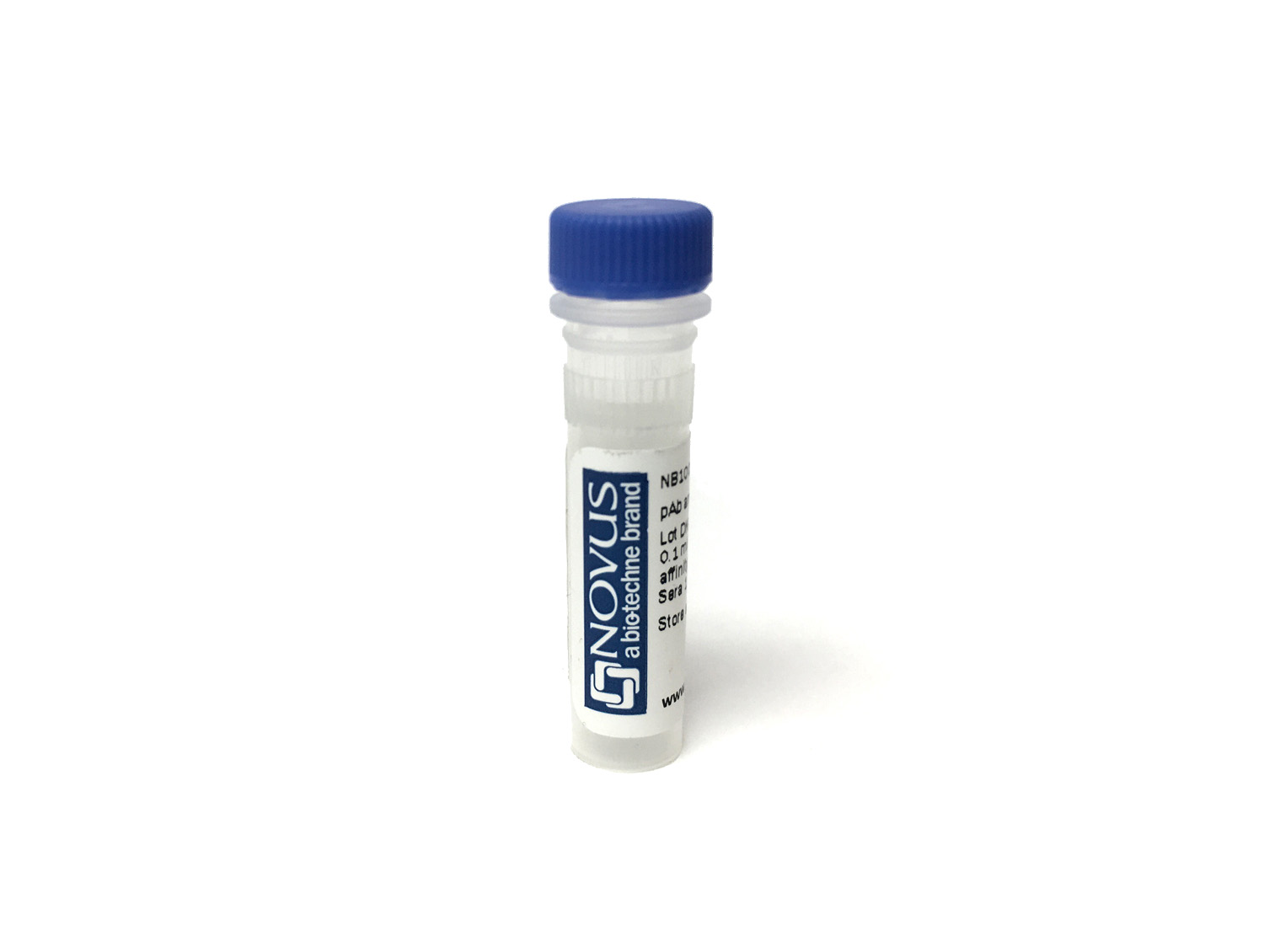Nuclear Membrane Marker Antibody (AE-5) [DyLight 350]
Novus Biologicals, part of Bio-Techne | Catalog # NBP3-11308UV


Conjugate
Catalog #
Forumulation
Catalog #
Key Product Details
Species Reactivity
Human
Applications
Immunocytochemistry/ Immunofluorescence
Label
DyLight 350 (Excitation = 353 nm, Emission = 432 nm)
Antibody Source
Monoclonal Mouse IgG1 kappa Clone # AE-5
Concentration
Please see the vial label for concentration. If unlisted please contact technical services.
Product Specifications
Immunogen
Nuclei of myeloid leukemia biopsy cells
Localization
Nuclear membrane
Specificity
This monoclonal antibody is part of a new panel of reagents, which recognizes subcellular organelles or compartments of human cells. These markers may be useful in identification of these organelles in cells, tissues, and biochemical preparations. It recognizes an antigen associated with the nuclear membrane expressed in human cells. It can be used to stain the nuclear membrane in cell or tissue preparations and can be used as a marker of the nuclear membrane in subcellular fractions. It produces a ring pattern around the nucleus of cells of normal and malignant cells and may be used to stain the nuclear membrane of cells in fixed or frozen tissue sections. It can be used with paraformaldehyde fixed frozen tissue or cell preparations and formalin fixed, paraffin-embedded tissue sections. The nuclear envelope (also known as the perinuclear envelope, nuclear membrane, nucleolemma or karyotheca) is the double membrane of the nucleus that encloses genetic material in eukaryotic cells. It separates the contents of the nucleus (DNA in particular) from the cytosol (cytoplasm). Numerous nuclear pores are present on the nuclear envelope to facilitate and regulate the exchange of materials (for example, proteins and RNA) between the nucleus and the cytoplasm. The space between the two membranes that make up the nuclear envelope is called the perinuclear space (also called the perinuclear cisterna), and is usually about 20 - 40 nm wide. Each of the two membranes is composed of a lipid bilayer. The outer membrane is continuous with the rough endoplasmic reticulum. The inner membrane is erected upon the nuclear lamina, a network of intermediate filaments made of lamin, that plays a role in mitosis and meiosis. The type of lamins present are A, B1, B2, and C. The nuclear envelope may also play a role in the disposition of chromatin inside the nucleus. The lamina acts as a site of attachment for chromosomes. It also acts like a shield for the nucleus. During prophase in mitosis, the chromatids begin condensing to form chromosomes, and the nuclear envelope begins to disintegrate. During metaphase, the nuclear envelope is completely disintegrated, and the chromosomes can be pulled apart as chromatids by the spindle fibers.
Marker
Nuclear Membrane Marker
Clonality
Monoclonal
Host
Mouse
Isotype
IgG1 kappa
Applications for Nuclear Membrane Marker Antibody (AE-5) [DyLight 350]
Application
Recommended Usage
Immunocytochemistry/ Immunofluorescence
Optimal dilutions of this antibody should be experimentally determined.
Application Notes
Optimal dilution of this antibody should be experimentally determined.
Formulation, Preparation, and Storage
Purification
Protein A or G purified
Formulation
50mM Sodium Borate
Preservative
0.05% Sodium Azide
Concentration
Please see the vial label for concentration. If unlisted please contact technical services.
Shipping
The product is shipped with polar packs. Upon receipt, store it immediately at the temperature recommended below.
Stability & Storage
Store at 4C in the dark.
Background: Nuclear Membrane Marker
Additional Nuclear Membrane Marker Products
Product Documents for Nuclear Membrane Marker Antibody (AE-5) [DyLight 350]
Product Specific Notices for Nuclear Membrane Marker Antibody (AE-5) [DyLight 350]
DyLight (R) is a trademark of Thermo Fisher Scientific Inc. and its subsidiaries.
This product is for research use only and is not approved for use in humans or in clinical diagnosis. Primary Antibodies are guaranteed for 1 year from date of receipt.
